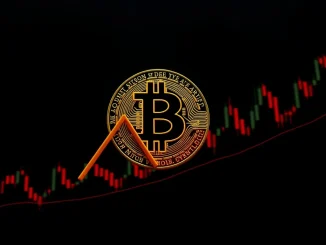
Big news just hit the wires, straight from the blockchain watchers at Whale Alert. They’ve reported a significant event: a staggering 1 billion USDT has just been minted at the Tether Treasury. For anyone keeping an eye on the crypto market, this kind of move is worth paying attention to. It’s not just a number; it potentially signals shifts in liquidity and market dynamics.
What Does 1 Billion USDT Minted Signify?
When USDT, the largest stablecoin by market capitalization, is minted, it typically indicates one of two primary things:
- Increased Demand: Large market makers or institutional players might be depositing fiat currency (like USD) with Tether in exchange for new USDT. This suggests a demand for stable, liquid assets within the crypto ecosystem, often to buy other cryptocurrencies or to provide liquidity on exchanges.
- Treasury Management: Tether might be replenishing its own reserves or preparing to distribute the USDT to various blockchain networks or partners based on anticipated demand.
The fact that it happened at the Tether Treasury, as noted by Whale Alert, means these are newly created tokens entering the potential supply pool, rather than just transfers between wallets.
How Does a Massive Stablecoin Mint Impact the Crypto Market?
A large USDT minted event is often watched closely by traders and analysts because it can be a precursor to increased buying pressure on other digital assets. Here’s why:
- Newly minted USDT represents fresh capital entering the crypto space.
- This capital is typically used to purchase Bitcoin, Ethereum, and altcoins on exchanges.
- Increased buying activity can lead to upward price movements.
Think of it as adding more fuel to the market’s engine. While not a guaranteed predictor of a price surge, it’s a strong indicator of potential liquidity infusion.
Isn’t This Just Tether Treasury Printing Money?
This is a common point of discussion and sometimes concern. It’s important to understand how stablecoins like USDT are supposed to work. Ideally, each USDT is backed by an equivalent amount of reserves (like USD, cash equivalents, or other assets). So, the minting process should, in theory, be initiated by someone depositing $1 billion or equivalent assets with Tether.
However, critics have raised questions about the full backing and transparency of Tether’s reserves in the past. While Tether has taken steps to provide more attestations and reports, the debate continues. The Whale Alert notification simply reports the on-chain event of tokens being created by the Tether Treasury; it doesn’t provide details about the underlying assets received in exchange.
What Should Crypto Market Participants Do?
For those active in the crypto market, this event is a signal to watch closely. Here are some actionable insights:
- Monitor Market Reaction: Observe how Bitcoin, Ethereum, and major altcoins react in the hours and days following this minting event. Does trading volume increase? Do prices trend upwards?
- Check Exchange Inflows: Sometimes, large mints are followed by significant transfers of USDT to exchanges, which is a more direct signal of intent to buy other assets. Whale Alert often tracks these movements too.
- Consider Liquidity: Increased USDT supply generally means more liquidity on exchanges, potentially leading to tighter spreads and easier execution of large trades.
This USDT minted event, reported by Whale Alert from the Tether Treasury, adds a significant amount of potential buying power to the crypto market. While the full implications unfold, it’s a clear indicator of activity and potentially increasing demand for digital assets.
Conclusion: Keeping an Eye on the Flow
The minting of 1 billion USDT is a substantial event in the stablecoin world, brought to light by Whale Alert monitoring the Tether Treasury. Such large mints have historically preceded periods of increased activity and volatility in the broader crypto market. Whether driven by organic demand or strategic treasury management, this fresh influx of stablecoin liquidity is a key development for traders and investors to consider as they navigate the digital asset landscape.



